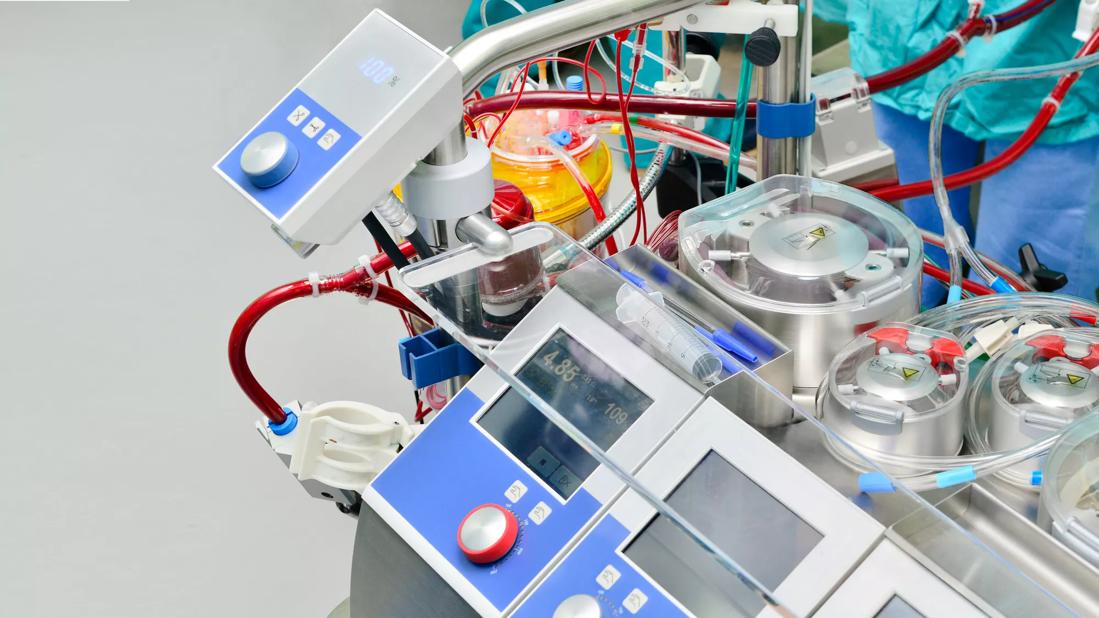
By Edward Savage, MD, Director, Heart, Vascular and Thoracic Center, Cleveland Clinic Martin Health
Advertisement
Cleveland Clinic is a non-profit academic medical center. Advertising on our site helps support our mission. We do not endorse non-Cleveland Clinic products or services. Policy
Note: This article is reprinted from Cardiac Care Publication News From Cleveland Clinic in Florida.
Patients with severe, untreated symptomatic aortic stenosis face a grim prognosis with a mean survival of approximately 2 to 3 years. Surgical aortic valve replacement (SAVR) is an effective treatment to relieve symptoms and improve long-term survival approximating that of the general population.
SAVR has been performed for more than 50 years and extensive scientific evidence supports its use. Historically, SAVR has been done by opening the chest with a full sternotomy. This traditional approach, which is still used today, includes dividing the entire breastbone (sternum) to expose the heart.
The patient is placed on a cardiopulmonary bypass (i.e., heart-lung machine), which supports the circulation of blood while the heart is arrested to perform the operation. The blood flow is diverted from the right atrium to the machine and returned to the aorta. The aorta is then clamped to isolate the heart from the circulation to allow the surgeon to work inside the heart and replace the aortic valve.
We’ve discovered that complete exposure of the heart is not necessary. Rather, only the portions of the heart on which the surgeon works need to be exposed. This finding led to the evolution of the minimally invasive surgical approach to aortic valve replacement that was first introduced at Cleveland Clinic in 1996.
Minimally invasive approaches to valve surgery allow the surgeon to use smaller incisions to perform the same operation. There are two basic approaches, the mini upper sternotomy and the mini right thoracotomy, as demonstrated in Figure 1B and Figure 1C, that provide adequate surgical exposure to perform the operation with less surgical trauma.
Advertisement
Patients undergoing MIAVS report less pain after surgery, and require lower doses of pain medication in the first 2 to 3 days following surgery. Patients receive fewer blood and blood product transfusions and are discharged from the hospital earlier than those with traditional median sternotomy approaches.
Of note, there is also a significant benefit to pulmonary function, as measured by bedside spirometry, in the first 24 to 48 hours after MIAVS. This may be one reason why patients with worse preoperative pulmonary function gain the most from MIAVS in comparison to sternotomy.
How to choose the optimal treatment modality (surgical or TAVR) for each individual patient is an ongoing debate. It is true that TAVR has had profound impact on the treatment of aortic stenosis, which is the predominant abnormality affecting the aortic valve. However, some patients require aortic valve replacement for aortic regurgitation (a leaking valve). There are no approved TAVR valves that can be used for regurgitation, so these patients require surgery.
Surgery may be preferable for young patients as well, as the TAVR valve will likely wear out in their lifetime and require repeat replacement. For this reason, the American Heart Association/American College of Cardiology guidelines currently recommend surgery in patients younger than 65 years or who have a life expectancy >20 years.
The incidence of structural deterioration of a bioprosthesis is greater in younger patients, supporting the recommendation to use a mechanical valve in patients younger than 50 years of age who can tolerate oral anticoagulation, as these valves should last the rest of their life. Patients with a small aortic annulus may benefit from surgery, which gives the option of expanding the aortic root to implant a larger bioprosthesis, as shown in Figure 3.
Advertisement
At Cleveland Clinic in Florida every aortic valve patient is assessed by a team comprised of cardiologists and cardiothoracic surgeons who recommend the best approach based on the patient’s individual needs.
Advertisement
Advertisement

Cleveland Clinic Weston Hospital’s collaborative model elevates care for complex lung diseases

Interventional pulmonologists at Cleveland Clinic Indian River Hospital use robotic technology to reach small peripheral lung nodules

Trained in the use of multiple focal therapies for prostate cancer, Dr. Jamil Syed recommends HIFU for certain patients with intermediate-risk prostate cancer, especially individuals with small, well-defined tumors localized to the lateral and posterior regions of the gland.

Cleveland Clinic Weston Hospital is actively recruiting patients for an international, multicenter, phase III study comparing MIS versus open interval cytoreduction following neoadjuvant chemotherapy in patients with stage IIIC-IV epithelial ovarian cancer.

Urologic oncologist with Cleveland Clinic in Florida performs robotic-assisted retroperitoneal lymph node dissection.

Cleveland Clinic researchers in Florida identify unexpected survival benefit

Noninvasive, radiation-free imaging supports treat-to-target IBD care

Cleveland Clinic in Florida transplant specialists perform advanced surgical approach for living kidney donation